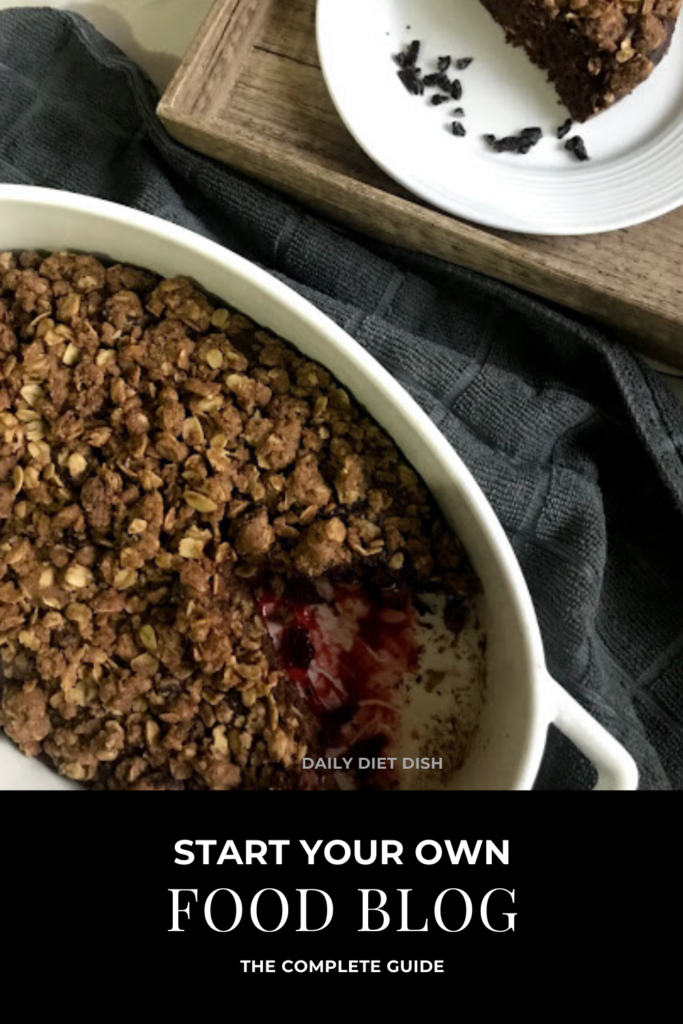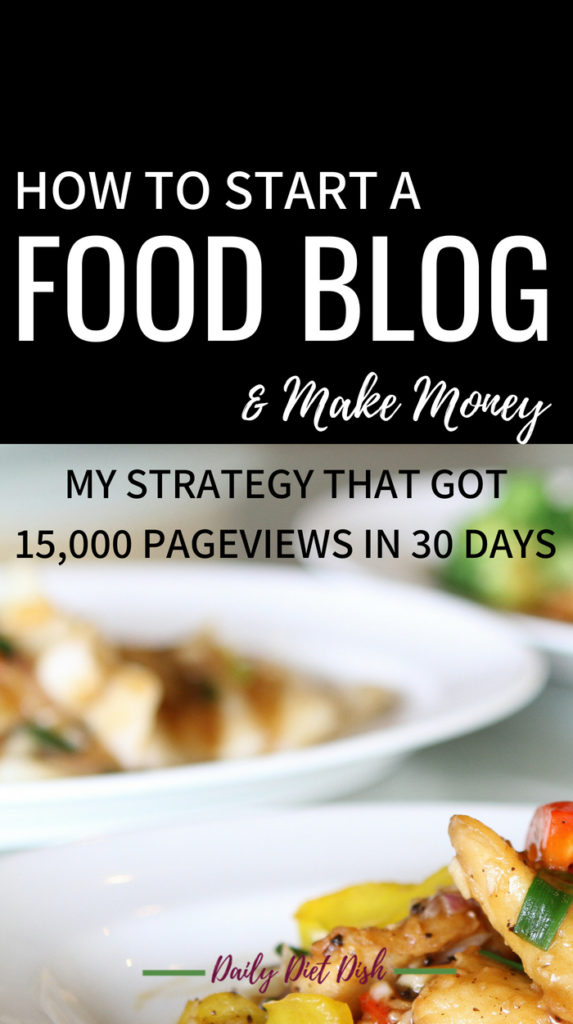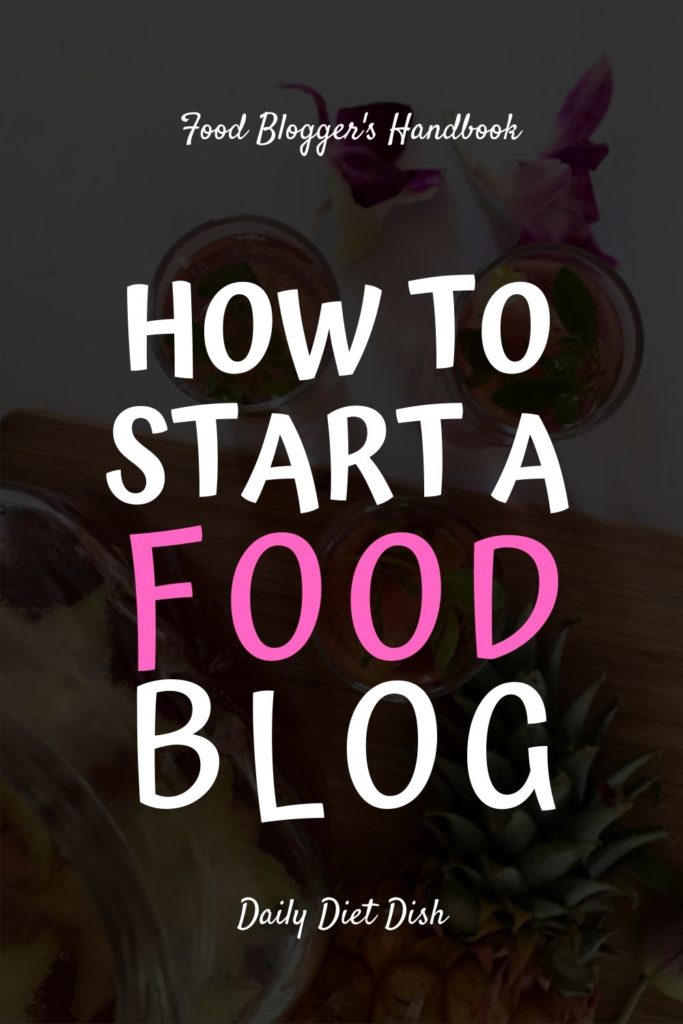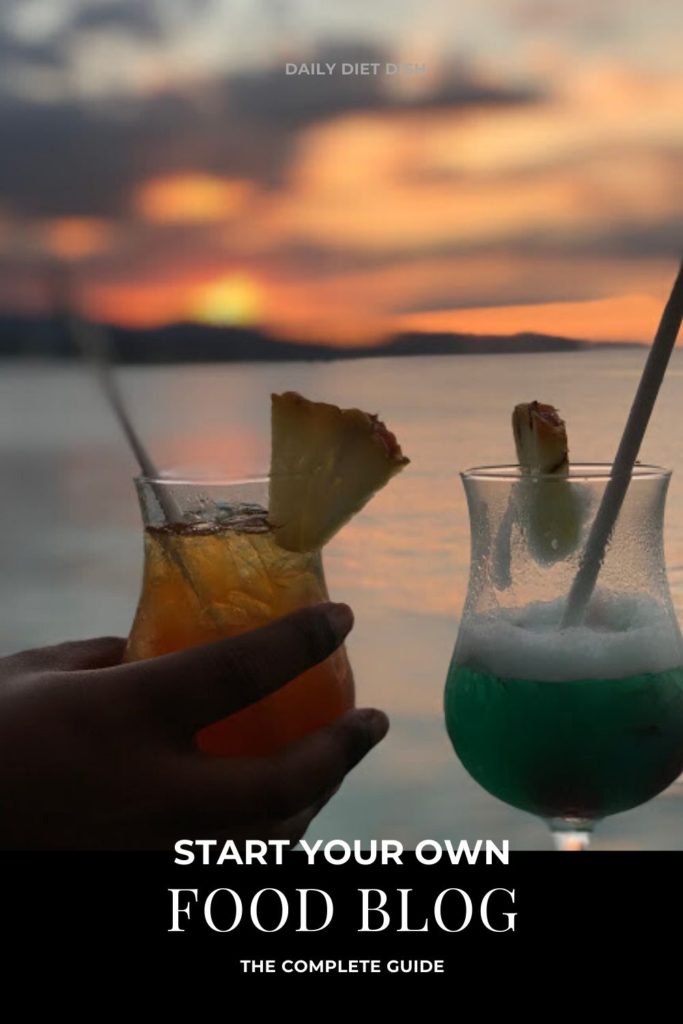If you’ve always had a passion for experimenting, sharing your best recipes, or improving your health, starting a food blog might be in the cards for you.
A lot of persons have awesome recipes and health stories to share but opt to use social media only. While this is a great asset, when you start food a blog, you create a platform to offer great value. It’s also a great way to make money.
However, while starting a blog may be a great idea, it does take some commitment and time before you’ll start to see results.
By starting a food blog, you can:
- keep yourself accountable to your diet/lifestyle
- create a community of people sharing the same journey
- share your wins and lessons
- create additional income
- improve your creativity and writing skills
One of the major advantages that food blogs have is that depending on your niche, you will get a lot of traffic if you master some of the tips that I’ll share below.
For this blog, I was able to get over 15,000 page views within the first 30 days of launching. That’s awesome compared to the first blog that I started this year- which had zero traffic.
By the end of 90 days, I had enough page sessions on Daily Diet Dish (DDD) to apply to one of the major ad networks and start earning from my blog, allowing me to provide more even value.
Here’s what I did in a nutshell:
- Strategic research
- Created a blog plan
- Planned content using SEO tools
- Use Pinterest and Google to drive traffic
Before going into all of the details, let’s start from the beginning.
(This post contains affiliate links. Read the full disclosure here)
The Big Questions
1. How do food bloggers make money?
Thanks for asking. 🙂 Currently, there are many ways to make money from a food blog. The top ones include:
- Advertisements
- Affiliate marketing
- Sponsored posts
- Creating your own products
All of these can be very lucrative when done right. In fact, some of the top food bloggers earn over $100,000 per month from all of these methods combined.
You may start to think that only a special person can achieve that- but in fact, there are certain steps that will increase your chances for success in any blogging niche. Some of them are included below.
This leads us to the second question:
2. Decide What You Want To Blog About
I find it easier to explore this step a little before you make any other progress on your new blog.
A food blog can have many different niches. Some of the popular ones are:
- recipes- paleo, vegan, low carb/keto, atkins, kids, quick & easy
- food & fitness
- food & weight loss
- food & travel
- food & lifestyle
- food and nutrition information
If you don’t know what niche you would like to start a food blog in, you can start by thinking about some blogging goals. Not knowing your goals can pull you in many different directions and you’ll lose your motivation faster than you think.
Here are some questions that you should consider before moving on:
- Why do you want to start a blog? Make money, share, teach, etc?
- What do you hope to accomplish for yourself? Exposure, income, etc?
- What lessons or insights or experiences do you hope to share with your readers?
- How much time do you have to commit?
- How much money do you have to commit?
- How long are you willing and able to stay committed if you don’t begin to see results right away?
(Hint: Most bloggers expect to see results after a month and then give up very easily. Be prepared to commit at least 6 months before you decide that it’s not for you)
After sitting with yourself and committing to the idea that this new venture may take well up to a year before you see any positive returns (income), you can start to think in terms of long-term value instead of short-term tactics that will only drive traffic or sales.
The best bloggers provide value before they expect to receive anything in return. Are you prepared to do this?
Awesome! Let’s move into Step 1.

Step 1- Choose Your Blog’s Niche & Name
Just saying that you want to start a food blog can be a recipe for disaster.
In order to be successful, you have to choose a niche in that industry and focus on it. This makes it easier for your site to rank for specific keywords, and it also makes it easier for you to stand out to your ideal reader.
In the food blog industry, there are different niches such as vegan, low carb, gluten-free, paleo, Atkins, keto, etc. You can use tools like KWfinder to see which niches have the least the least competition for keywords.
When you are researching the niche for your food blog, find out the top blogs in the space and look at the top posts in that niche. This will help you to gauge the competition and see what types of articles your readers are into.
Your end goal is to create awesome content that will make your blog more valuable to your advertisers and readers. And fortunately, you don’t have to reinvent the wheel.
After you have identified some of the top blogs and gotten a list of some of the most popular posts, you can choose and register a domain name for your blog. Ensure that your blog name has something to do with your niche/focus.
P.S. If you use BlueHost, which is what I use and promote based on my awesome experience with them, you get a free domain when you start your hosting plan.
Step 2- Set up WordPress and Bluehost
You’ll need the following things when you’re launching a blog to make money.
1. A hosting platform- Bluehost
2. An editor- WordPress
3. A theme to customize the look and feel of your blog
This is where some bloggers get truly overwhelmed.
I don’t believe in free themes when you want to launch a blog that is optimized for SEO and speed. Therefore, I waver between 2 themes that are both higher and lower end.
Genesis Framework is the higher end theme that you should only purchase if you’re tech-savvy, have some time to learn how to navigate it, or have some extra funds to higher a designer to customize it.
The GeneratePress theme is the lower end option that you can set, design and forget. It’s easily customizable and also very affordable. I tried Genesis and went back to using GeneratePress for this blog.
The relevant plugins
The beauty of using WordPress is that you can customize it to whatever design you want. You can add plugins to make it even more functional.
However, you have to realize that not plugins are created equally and that too many poorly designed ones will negatively affect the speed of your site.
When you start a food blog, you have to consider how many images you’ll use in your recipes as well because this can impact the speed of your blog.
Here are the basic plugins that I use and recommend for a successful blog:
- Security- Securi
- Anti-spam- Akismet
- Comments- WPDiscuz
- Cache- WP-Cache, W3 Super Cache
- Photo optimization- Short Pixels, WP Smush
- Social Media- Simple Social Icons, Pinterest Save Button
- Traffic tracking- Google Analytics
- Email list- Mailchimp
- Backup- Updraft Plus
- SEO- Yoast SEO
Other services that you should sign up for:
- Blog email address- Gmail, Bluehost email service
- Email list manager- Mailchip or Convertkit
- Design- Canva, Adobe
- Social Media- Pinterest, Facebook

Step 3- Create a Reader Profile
Who is your ideal reader and what do they come to your blog for?
A lot of bloggers (who want to make money) make the mistake of talking mainly about themselves when creating content.
Of course, you can use your experiences and expertise to provide a more insightful piece of content to your readers, but successful bloggers know that readers are searching for content that will help them in some way.
Think about it.
When you go to Google to find something, do you search for ‘How I spent my morning last weekend’ or ‘How to raise my GPA?’.
When we know that we’re creating content to help people solve their problems, we can think about our ideal reader and what problems they would have. Most importantly, what problems are they already searching for?
Here are some things to identify:
- Their age range
- Their main concerns (which will you can solve)
- Their lifestyle
- Their income level
This will help you further on when you are creating content.
Step 4- Create a Blog Plan
This is the only thing that I could have done to save my sanity, drown out the noise, and ensure that I’m not taking my blog all over the place.
If your goal is to monetize your blog, have a plan in place for the following things:
- your blog brand- logo and tagline
- your ideal social platforms- Facebook, Instagram, Pinterest?
- how you are going to make money- ads, affiliate marketing, sponsored posts, etc
- do you plan to create any products in the future?
Of course, you can take a look at some of the bloggers who are already in your niche to see if people are already buying anything, and if they are, what are the products like?
You may get some inspiration from this step, but try not to copy anyone else’s products or get overwhelmed by what’s already available.
Remember that you know why you’re doing this and the value that you’re adding.
P.S.- I use a Google Sheets document for this because it’s super convenient to have everything in one place.
Step 5- Create a Content Schedule
Now that you have an overall brand for your blog, you can go ahead and start to outline the type of content that you will be creating.
Generally, you’ll be creating content that serves different purposes. Here are the 3 types of content that I recommend you start with:
- Evergreen content– These are blog posts that generally surpass 1500 words. The aim is to provide core content that can rank on Google and that your readers can always come back to for insightful information.
- ‘Freebie’– This is the free resource that you will use to build your email list. It can be a free ebook, email course, workbook, or anything else that will provide value to your readers.
- ‘List’ or ‘How To’ Posts– These are shorter posts that can help your readers to get information right away.
A lot of persons launch a blog with one or two blog posts, but I think it’s better to launch with at least 2 in each category that you have so that people can:
a) stay on the blog longer
b) know what you have to offer
You also get to avoid looking like a complete newbie.
Step 6- Start Writing Content
At this point, you are way ahead of most new bloggers. But now is the time to put everything together. It’s time to give your blog life.
The number of posts that you publish your blog with can vary depending on what your goals for your blog are and how often you’re going to create content in the future.
As I mentioned earlier, it’s great to have at least 2 posts in each category of your blog, but this will depend on you.
If your goal is to start with a bang and begin promoting immediately, aim to launch with a least 10 posts in total from each of your different categories.
If you’re ok with starting with 5 posts and publishing new blog posts at least 2 times a week going forward, you can also do that.
However, the most important thing is that you’re consistent when you want to launch and grow a successful food blog.
Some important things to note about writing blog posts:
* Try to aim for at least 1000 words per post, even for recipe posts
* Use the Yoast plugin to track your keywords
* Ensure that at least 2 of your posts can be linked together to help encourage further reading from your readers
* Use this time to create a least 1 freebie that will help to capture email addresses. Link the freebie to at least 2 of your initial posts
Step 7- Launch Your Food Blog
You’re finally here!
The work has just started, but you’ll feel so much better knowing that the rest of your content is already planned and you won’t be floundering around for posts to write and publish for the next while.
Remember to celebrate each step, and then move to the next level. After you’ve launched, the next step is to drive traffic and start growing your email list. Of course, you’ll be posting frequently to keep up your momentum.
These are all the things that I did before launching this blog a few months ago and they made all the difference, compared to my first blog. It may seem like a lot more work than usual, but it’s worth it if you want blogging to be a stress-free experience.
The Next Step For a Successful Blog
After you launch your blog, your next step is to drive traffic. I was able to do this using Pinterest. How?
In a nutshell:
- Sign up for a Pinterest Business Account
- Claim your website
- Create boards that keyword-rich
- Create high-quality pins
- Use keywords in your pin description
The most important part is to approach Pinterest like a search engine, instead of a social network. In my next post, I will be sharing all of the strategies that I use.
To your blogging success,
Lailah 🙂


